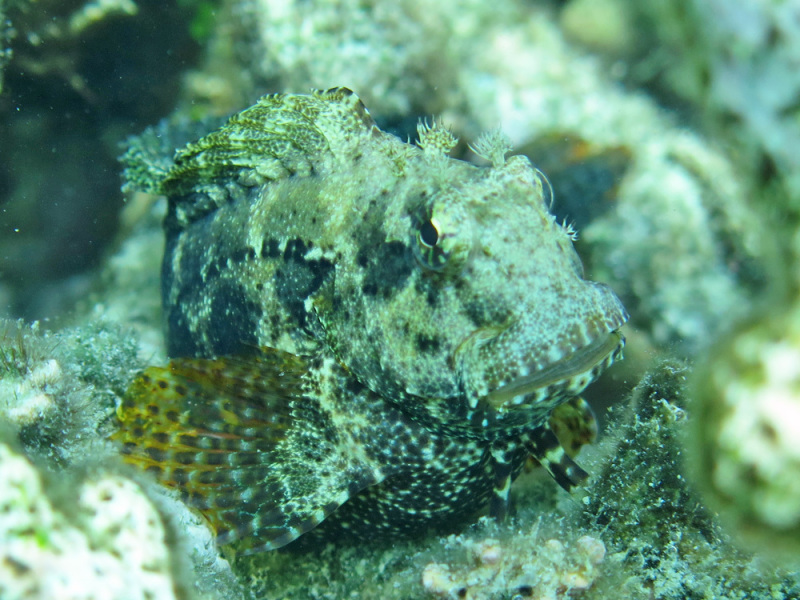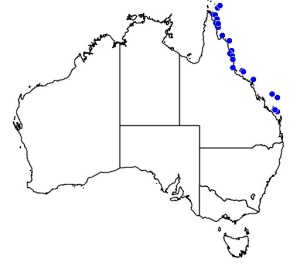Colours
Distinguishing features
A large blenny with a complex pattern of mottled grey and black spots and patches over the body with several large dark spots in a row below the dorsal fin, fading posteriorly. Found resting on the top of complex branching coral heads or hidden within dead coral branches.
Size
- Up to 14 cm (Standard length)
Depth range
- Depth range data is not yet available.
Synonyms
Similar taxa
Distribution
Distribution and habitat preferences
Tops of lagoonal patch reefs in shallow water. Wilson (2001) found this species closely associated with dead branching corals at Lizard Island.
Found in most reef habitats around the island not exposed to heavy wave action.
Behaviour
The Banded Blenny is solitary and lives amongst dead branching corals on top of prominant coral platforms. They rest on the pectoral fins in between bouts of feeding. These fishes are mainly detritivores, combing small particles of organic material from the turf algae found inside the damselfish territories of Ward's Damsel and the Dusky Gregory, which typically farm algae on the tops of the bommies favoured by the blenny.
Web resources
References
- Caley, M.J. (1995). Community dynamics of tropical reef fishes: local patterns between latitudes, Marine Ecology Progress Series, 129: 7-18. LIRS catalog number 447.
- Caley, M.J. (1995). Reef fish community structure and dynamics: in interaction between local and larger-scale processes? Marine Ecology Progress Series, 129: 19-29. LIRS catalog number 448.
- Caley, M.J. and J. St John (1996). Refuge availability structures assemblages of tropical reef fishes, Journal of Animal Ecology, 65: 414-428. LIRS catalog number 458.
- View all references





